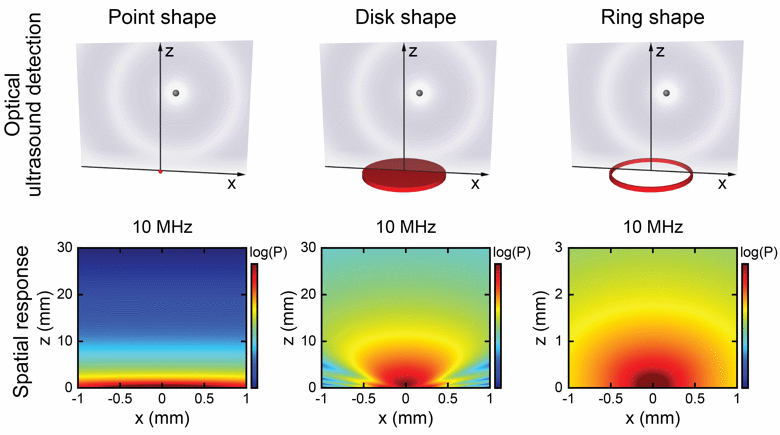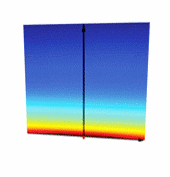
Photoacoustic (PA) imaging offers unique capabilities in studying biological tissue based on optical absorption contrast. The sensitivity and bandwidth in detecting laser-induced ultrasonic signals are crucial for attaining high-quality and high-resolution PA images. Detectors made from piezoelectric materials are commonly used to detect laser-induced ultrasonic signals by converting pressure waves to measurable electrical signals. However, they typically lack adequate broadband sensitivity at ultrasonic frequency higher than 100 MHz. In addition their bulky sizes and optically opaque nature cause technical difficulties in integrating PA imaging with conventional optical imaging modalities. Recent studies have shown that optical detection of ultrasound provides several advantages over traditional piezoelectric detection in overcoming the aforementioned difficulties. Using optical detection of ultrasound may potentially enable PA imaging to have higher performance, improved accessibility, and possibility to be easily integrated with commercial microscopic platforms for comprehensive multimodality imaging.
In principle, optical detection of ultrasound can provide greater sensitivities over a significantly wider frequency range, potentially providing higher spatial resolution for PA imaging. In addition, it offers an opportunity to create miniaturized and optically transparent ultrasonic detectors. In this review, we provide an overview of recent technological advances in optical methods of ultrasound detection by classifying them into four categories based on their implementations in PA imaging, including free-space-optics based approaches, fiber-optics based approaches, photonic integrated circuits, and optical interface based approaches. We also introduce a theoretical framework to generalize sensitivity, bandwidth, and spatial responses of optical ultrasound detection geometries. Finally, we conclude the review with an overall comparison of all the optical ultrasound detection methods discussed in this review. We believe that optical ultrasound detection methods will play an increasingly important role in photoacoustic imaging for biomedical applications.
Keywords: photoacoustic (PA) imaging, acoustic measurements, interferometry, optical resonators, optical sensors

